Discover the Aosta Valley: A Unique Corner of Italy
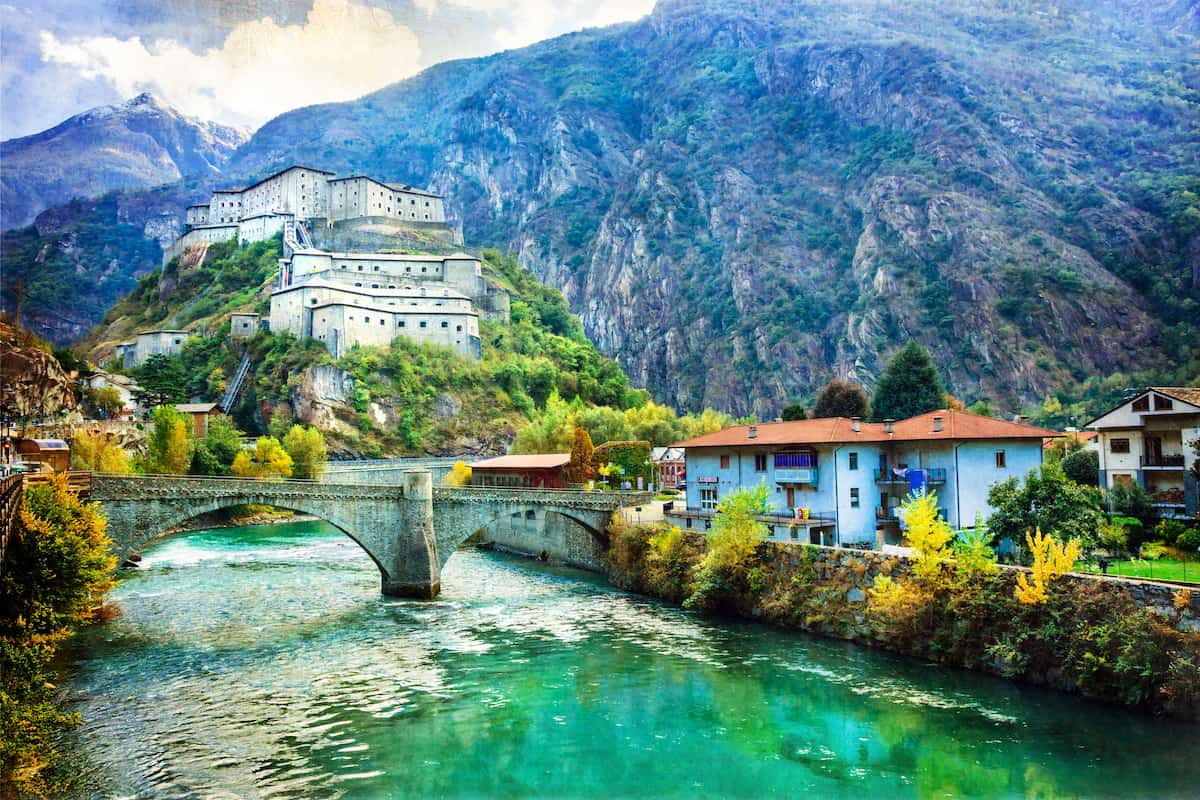
Italy’s Aosta Valley, a bit off the beaten track, holds special appeals for travelers, including a unique sense of place.
Where is the Aosta Valley (Valle d’Aosta)?
One of Italy’s 20 regions, the Aosta Valley is nestled in the Alps, in the northwest corner of Italy. It is bordered by France on the west, Switzerland on the north, and the region of Piedmont (Italy) on the south and east.
With the European Union borders open, the timing couldn’t be better for anyone hoping to explore this magnificent but lesser-known region.
What makes the Aosta Valley unique?
The smallest region of il Bel Paese (beautiful country), the Aosta Valley holds the distinction of having only one province rather than the subdivisions found in other regions.
Although diminutive in size, the region ranks among the most scenic. It doesn’t have the same cultural treasures as large cities like Rome, Florence, or Venice but it is also devoid of hordes of tourists.
A bit off the beaten track, its natural setting allows visitors to experience a variety of outdoor sports and activities. Unspoiled by the mass tourism that has plagued many other destinations in Italy, the Aosta Valley remains authentic, and its residents and businesses tend to be more gracious and receptive to guests. There are a wide variety of places to visit in Aosta Valley, Italy.
Overview of the Aosta Valley
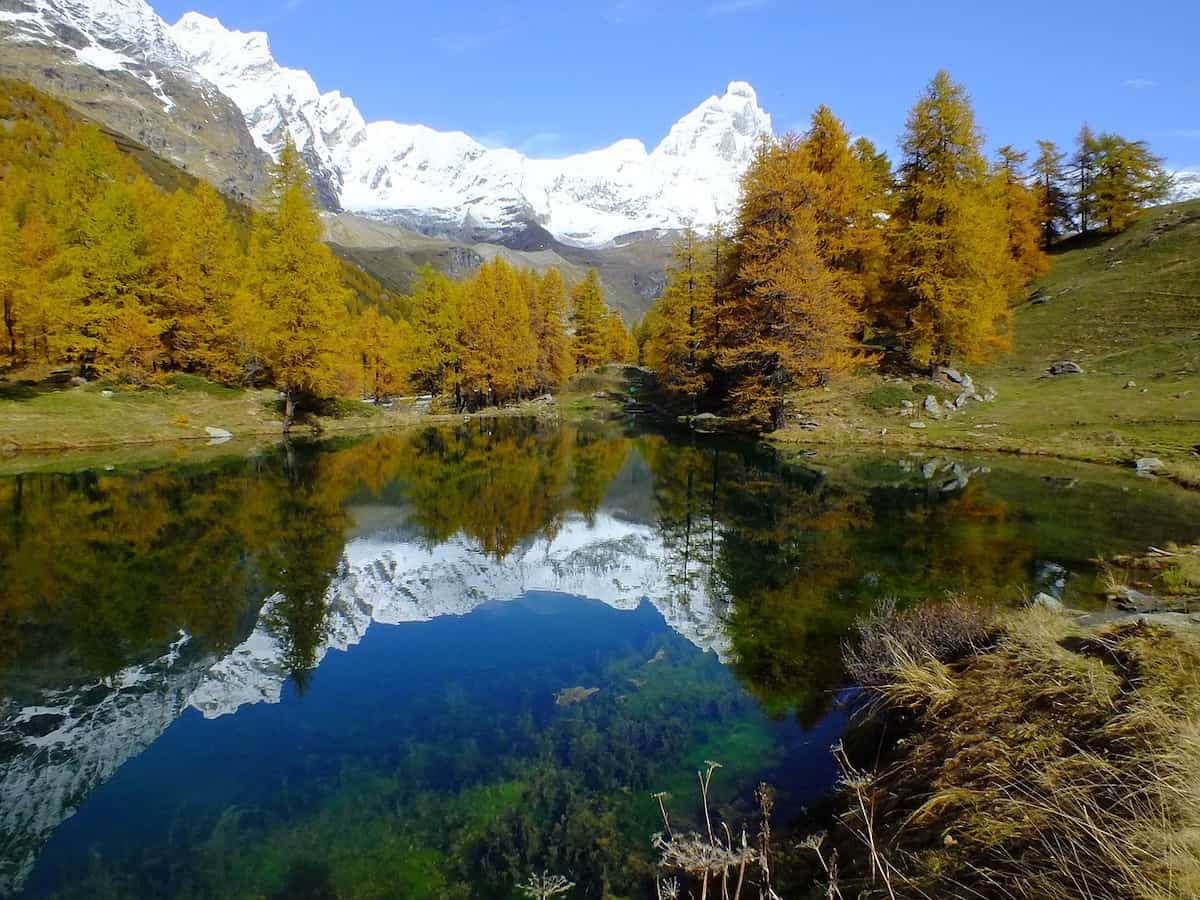
The food series, Le Petit Tour (which is streaming on MHz), showcases the culinary and wine traditions of the Aosta Valley (in Italian, Valle D’Aosta) and its passionate artisanal producers who are steeped in tradition. But the series’ stunning setting and cinematography—showcasing snow-capped mountains and lush valley views—often are the scene-stealers.
The Aosta Valley is surrounded by more than 40 mountain peaks, including some of the tallest ones in Europe, including Mont Blanc (at 4,810 meters above sea level) and Monte Rosa. Beneath the snow-capped mountain tops, picturesque hamlets and hillsides are dotted with centuries-old medieval castles and forts; bell towers, and church spires that seem to touch the sky; herds of grazing cattle; and colorful alpine wildflowers.
Aosta: Capital of the region
The capital city of the region, also called Aosta, dates back to Roman times. Bound by a common history, the area is unique in that it is bilingual, with both Italian and French as official languages (and a regional dialect, called Valdôtain, is also spoken). (See more about Aosta below.)
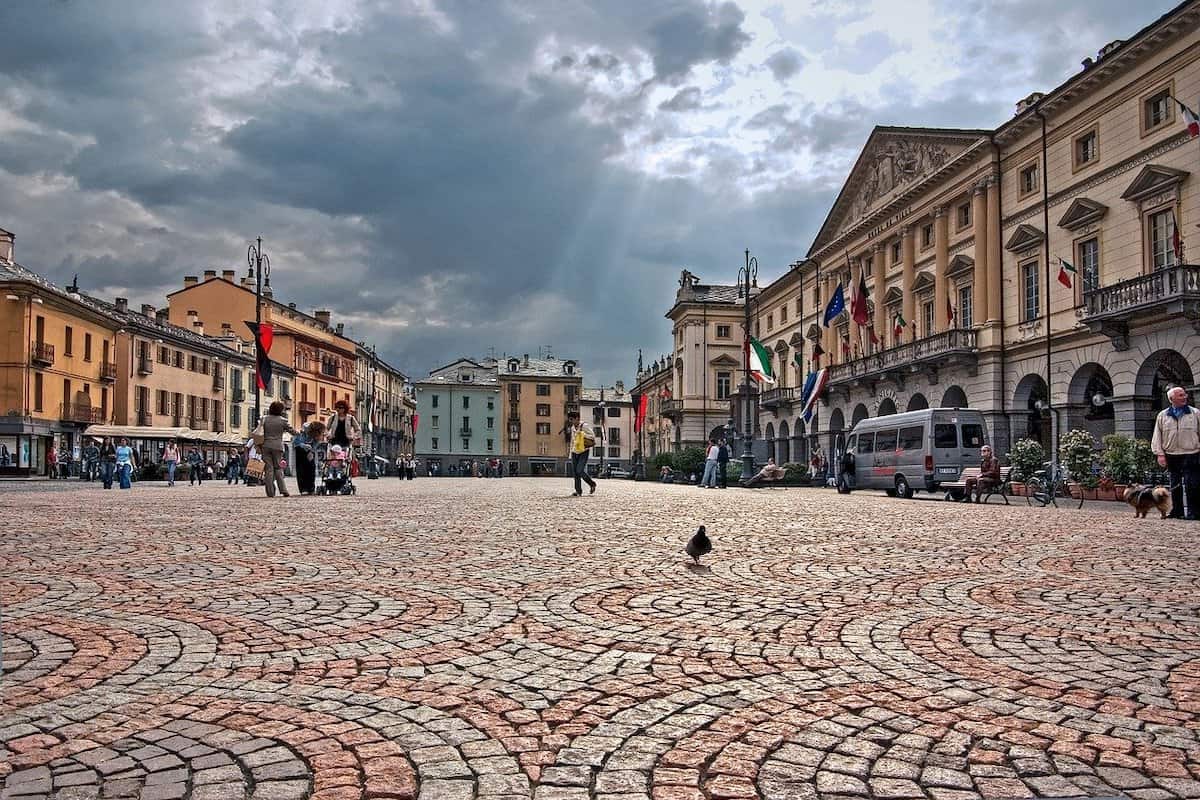
A mecca for lovers of nature
The destination is a mecca for adventurers drawn to the outdoors.
Grand Paradiso, Italy’s oldest national park (which has been compared to America’s Yellowstone), straddles the border with the adjacent region of Piedmont. The more than 270-square-mile park is filled with wildlife: ibex, chamois, eagles, marmots, birds of prey, and more.
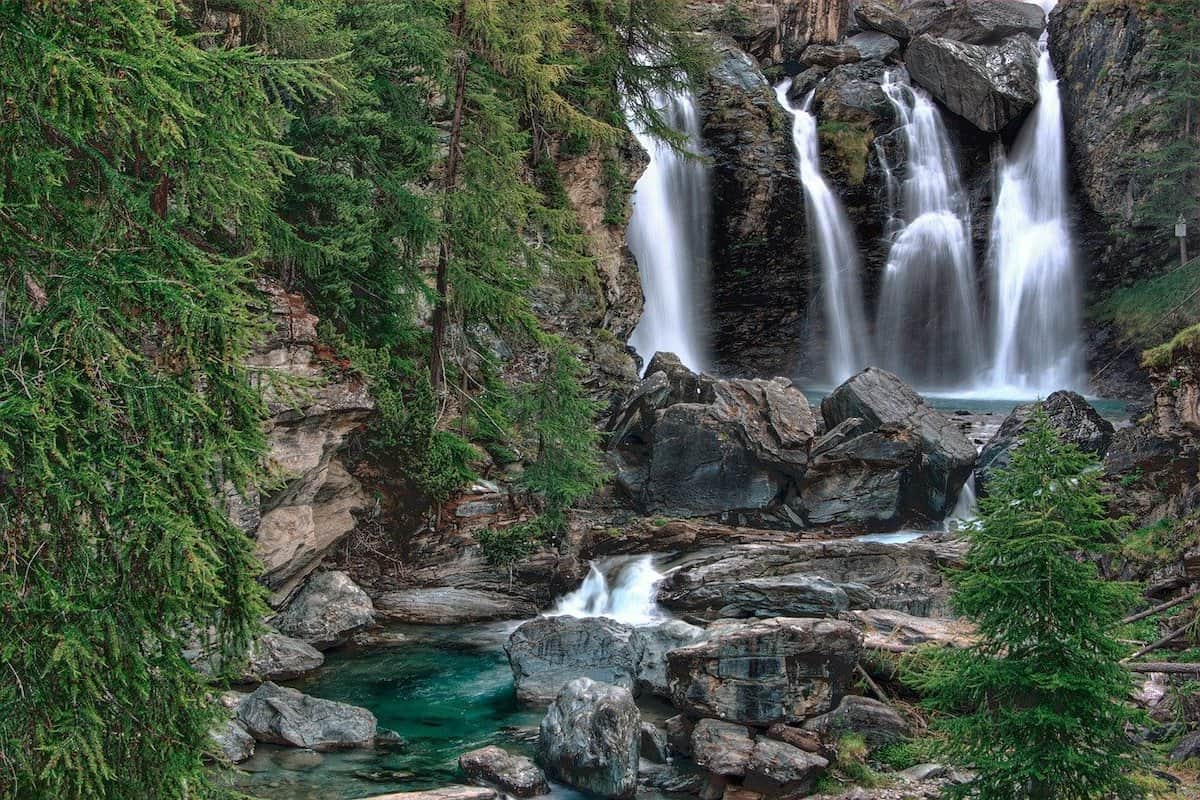
Although Mont Blanc is located primarily in France, the Aosta Valley offers spectacular views of the mountain range with eleven independent summits, especially from Courmayeur.
Those who enjoy sports and active travel, and those who want to travel slowly and soak in local life, will find a choice of different tours and itineraries to suit them regardless of the season.
Here are some other compelling reasons to visit the Aosta Valley:
Miles of trails for hiking and trekking
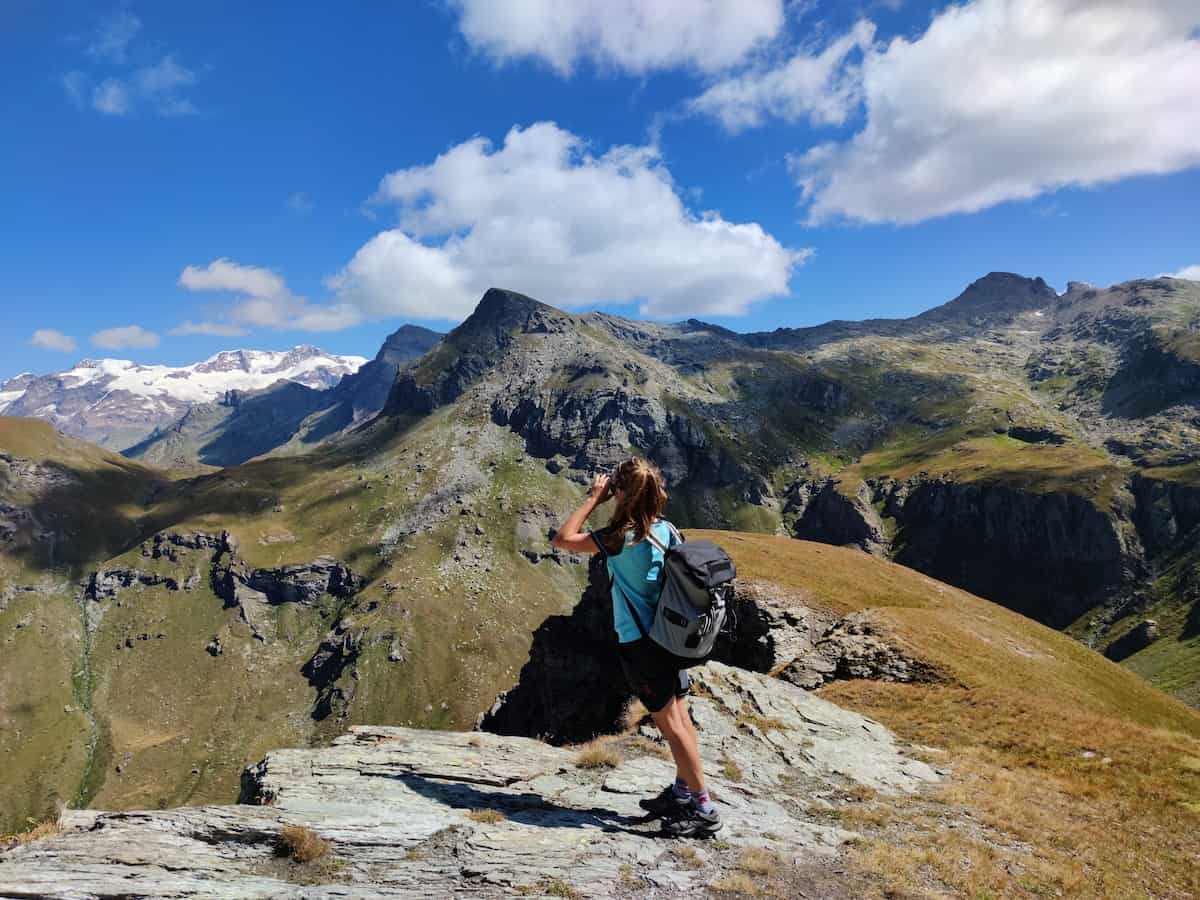
Regional and local governments, and mountain communities, maintain more than 3,100 miles of footpaths, ideal for short walks, longer hikes, or overnight treks with guides. During summer, these paths cross through meadows, pasturelands, woodlands, and high-altitude mountains.
Those opting for overnights can choose from an array of accommodations, ranging from camping sites, huts, and refuges to hostels and hotels. Mountain huts, first created at the end of the 19th century, offer beds for 2 to 6 people along with half-board (dinner and breakfast) accommodations. Certified professionals with an intimate knowledge of the terrain maintain the huts and assist visitors. More experienced hikers can stay at unattended bivouac huts.
The Via Francigena is a historic route that pilgrims took from Northern Europe to Rome. Popular with trekkers today, it passes through many vineyards and areas with PDO food products.
Aosta Valley skiing
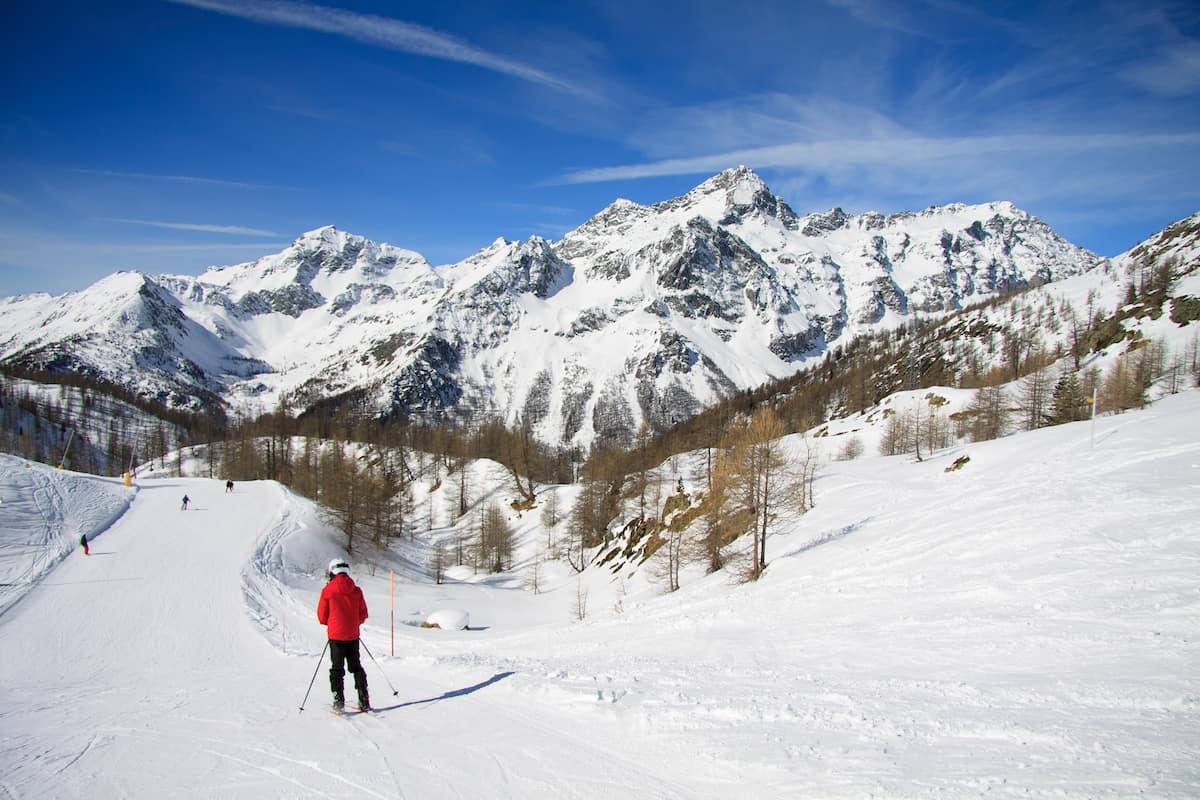
The slopes of Cervinia, Courmayeur, and Pila draw beginners as well as professional skiers to the majestic Aosta Valley where they can take advantage of two-season winter sports.
Breuil-Cervinia is one of two areas of Italy that offers skiing in summer (from the end of June to the beginning of September) on the Plateau Rosà glacier (with views of the Matterhorn. Plenty of snow and long trails—extending over three valleys in two countries, Italy and Switzerland—make the runs popular with World Cup teams.
Sports enthusiasts can go ice-climbing, ice skating, snowshoeing, dog sledding, or playing hockey in winter. In summer, there is fishing, swimming, rafting, canoeing, kayaking, road cycling, mountain biking, and golf.
Unique Alpine foods and wines
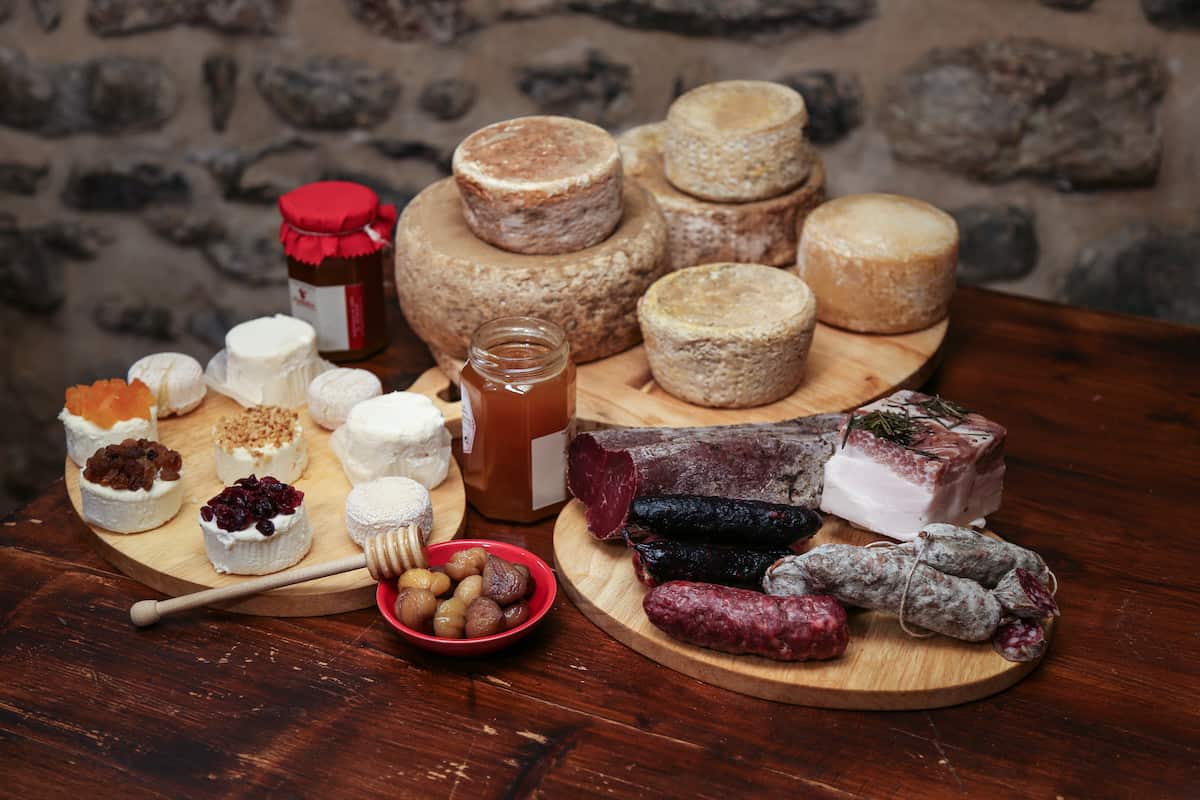
Geography, climate, and tradition have combined to create the unique gastronomy of the region. With cows, sheep, and goats grazing on the verdant hillsides and valleys, dairy products seem to be ubiquitous, especially cheeses.
The region boasts more than 100 varieties of cheese but DOP (Deonominazione di Origine Protetta)
Fontina is the most prized cheese in the region. It can only be produced in designated geographic areas, using specific raw materials and techniques, and is treasured by chefs and food lovers for its taste, texture, versatility, and meltability.
Often difficult (and expensive) to find outside Italy, Fontina is commonly found on cheese boards in Aosta, along with specialty cured meats and sausages (salumi, like Vallée d’Aoste Jambon de Bosses DOP, Motzetta, and Vallée d’Aoste Lard d’Arnad DOP). The cheese is also a primary ingredient in many traditional cooked dishes.
Because winters can be harsh, visitors will also find plenty of hearty soups as well as polenta, potato, and rice dishes to savor, both in small eateries and Michelin-starred gourmet restaurants. Desserts include regional biscuits (such as tegole and torcetti) or fruit pies or cakes made with fresh apples or pears from the orchards.
The Aosta Valley is one of the country’s driest and most mountainous regions, so it isn’t surprising that it is the smallest DOC wine appellation in Italy. Overcoming daunting challenges, winemakers produce seven sub-denominations that reflect the biodiversity in soils, altitudes, and sun exposure.
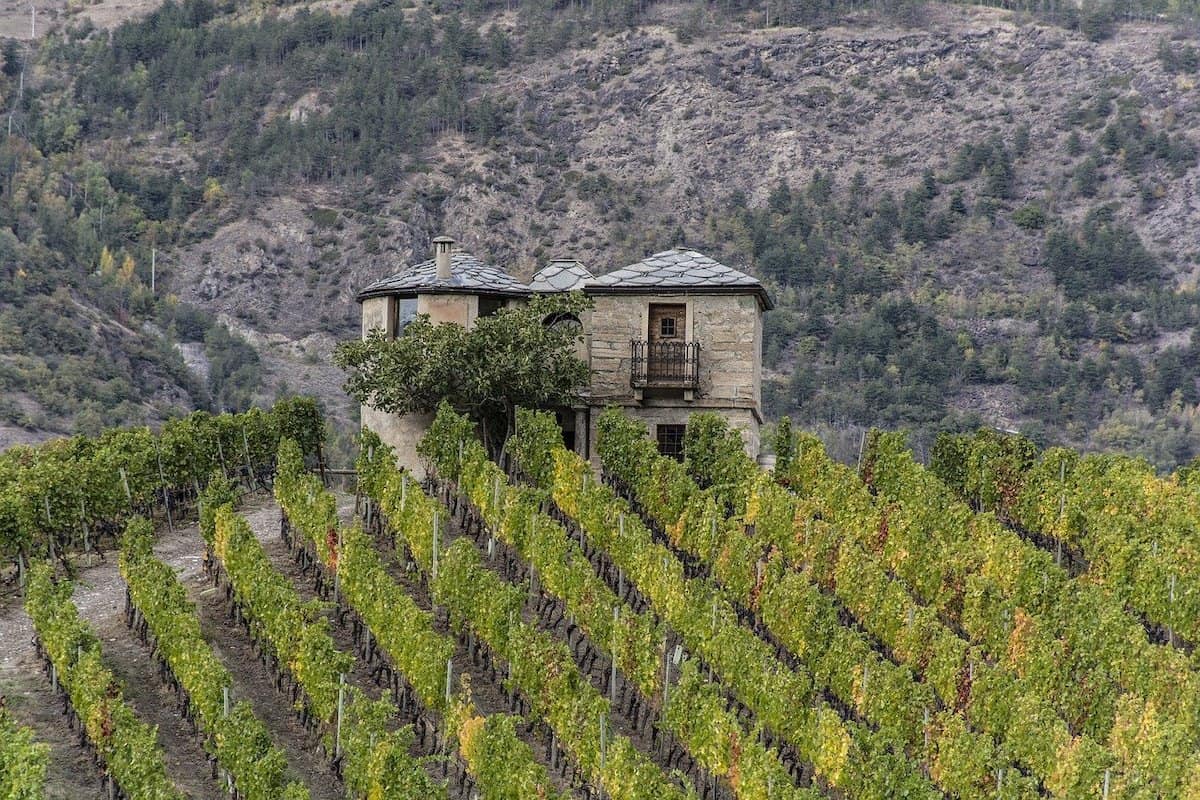
Wine lovers can follow the vineyards and wineries on the Aosta Valley wine trail to experience the unique wines tied to this terroir. (Because they are produced in such limited quantities, few are available for export outside Italy.)
Get immersed in Valdostana history, culture and traditions
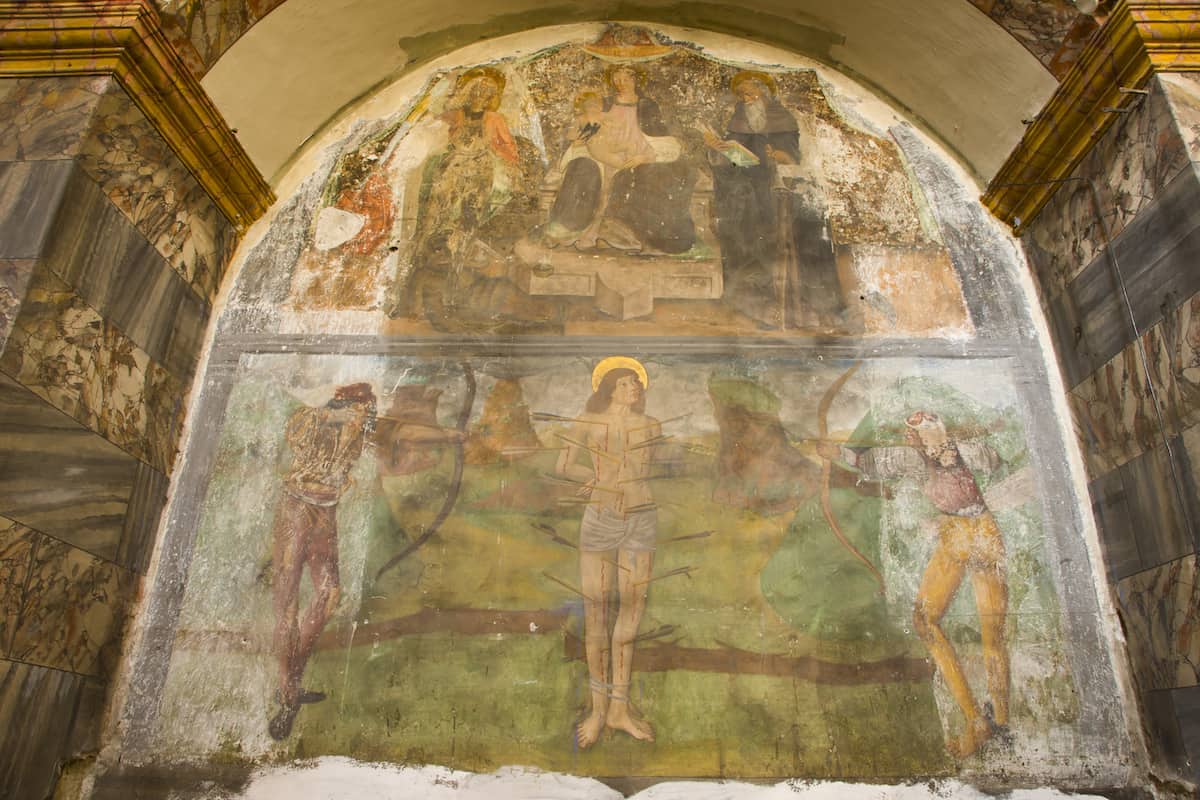
The city of Aosta, Italy has been called the “Rome of the Alps.” Visitors shouldn’t miss some of the monuments and well-preserved ancient ruins that remain, including the Arch of Augustus, the Porta Praetoria, the Roman Theatre, and the city walls.

Because the Aosta Valley was historically a strategic passageway for travelers crossing through the Alps, numerous towers and fortified castles emerged along the routes. Of the more than 100 castles that presently dominate the valley’s landscape, some are still open to visitors offering opportunities to learn about the region’s history. There is also an abundance of shops and cafes to explore as one strolls through the town.

Among the churches worth visiting in Aosta city, two are considered “religious masterpieces” for their art and architecture. The Aosta Cathedral (Cathedral of Santa Maria Assunta) dates back to the 11th century. The Church and Cloister of Sant’Orso Collegiate include archaeological excavations that trace the building’s construction and not-to-be-missed Romanesque sculptures in the cloister.
On a road trip, travelers can visit the quaint villages scattered throughout the region (such as La Salle, Fénis, Gressan, Arnad, Bard, and Saint-Pierre) to discover their unique beauty, foods, crafts, and cultural traditions. Check the local calendar for the timing of various cultural events and festivals, including the Sant’Orso Fair, which is held in Aosta.
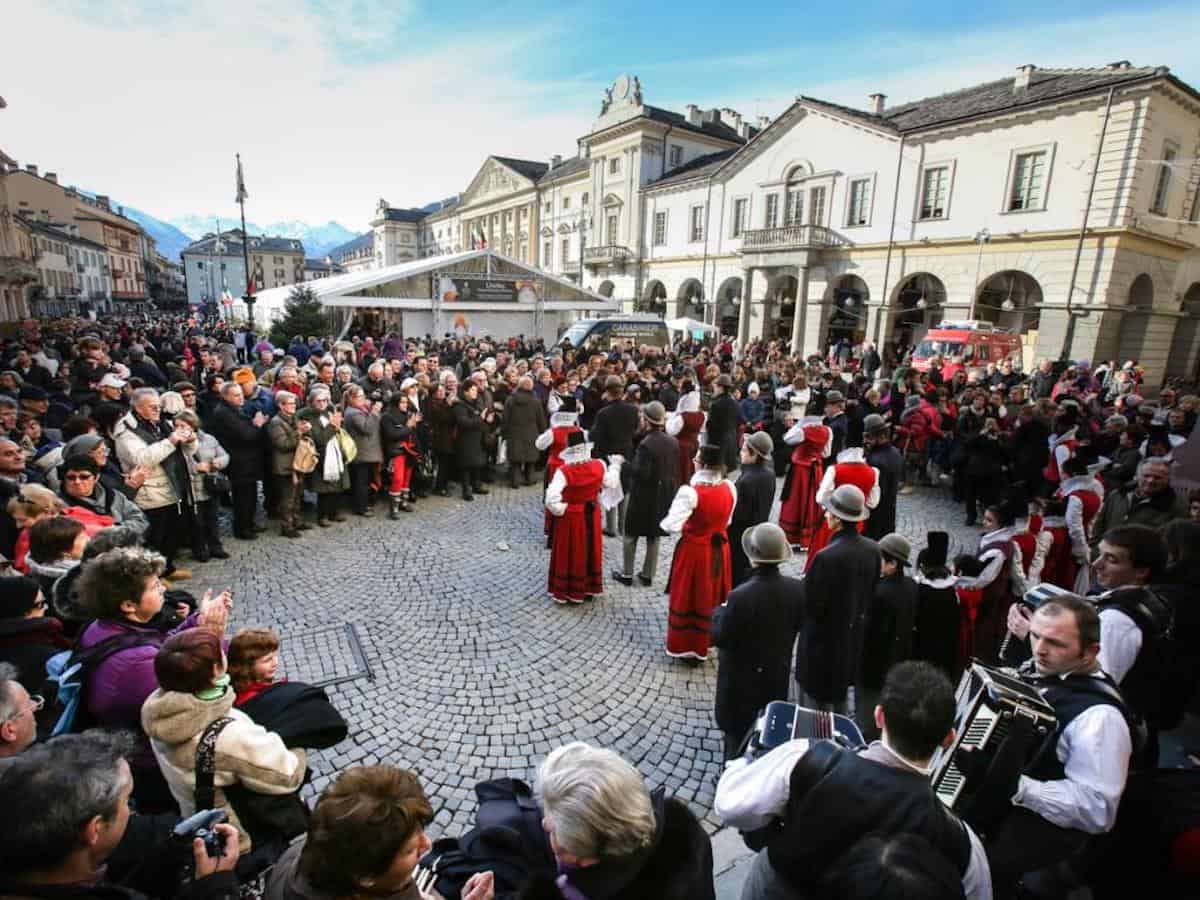
And for those who lean toward more sybaritic pursuits, there are many luxury resorts and spas. The casino at Saint-Vincent (the largest in Europe) with its thermal waters has drawn visitors since 1947.
When to visit Valle d’Aosta

When to go depends on your interests because each of the seasons in Valle d’Aosta, Italy offers different advantages.
- Summer is ideal for temperate weather suitable for any outdoor activity; the alpine scenery is stunning. Although July is the hottest month of the year, temperatures average around 65°F.
- In the fall, visitors can enjoy leaf-peeping and take advantage of the bounty of seasonal foods (like chestnuts and mushrooms). During this shoulder season, you are less likely to bump into tourists (as is also the case in spring).
- Ski and winter sports enthusiasts will relish the spectacular snow-covered landscapes and slopes in winter. January is generally the coldest month of the year.
- In spring, wildflowers will be in bloom and it’s a popular time for local festivals.
As long as you know what to expect (and prepare accordingly), there is no wrong time to visit.
Inspiration before you go
- Visit the official site of Aosta Valley Tourism. This site is one of the most comprehensive and well-organized tourism websites, providing encyclopedic information on what to see, what to do, and where to stay, as well as invaluable information on planning and booking a trip.
- The Italian Tourist Board also offers excellent information on the Aosta Valley region, including COVID-19 Updates.
Disclosure: The author was commissioned to write a series of posts about Le Petit Tour but any opinions expressed in this post are her own.
Previously on More Time to Travel:
- Le Petit Tour: Behind the Scenes of A New Food Travel Series
- Why Chefs and Foodies Fall in Love With Fontina
- Wines of the Aosta Valley: Come Sip and Savor
- How To Create An Aosta Valley Cheese Board
- Savoring the Flavors of the Aosta Valley on Le Petit Tour
- Luxury Hotels In Aosta Valley Italy
Save to Pinterest!!
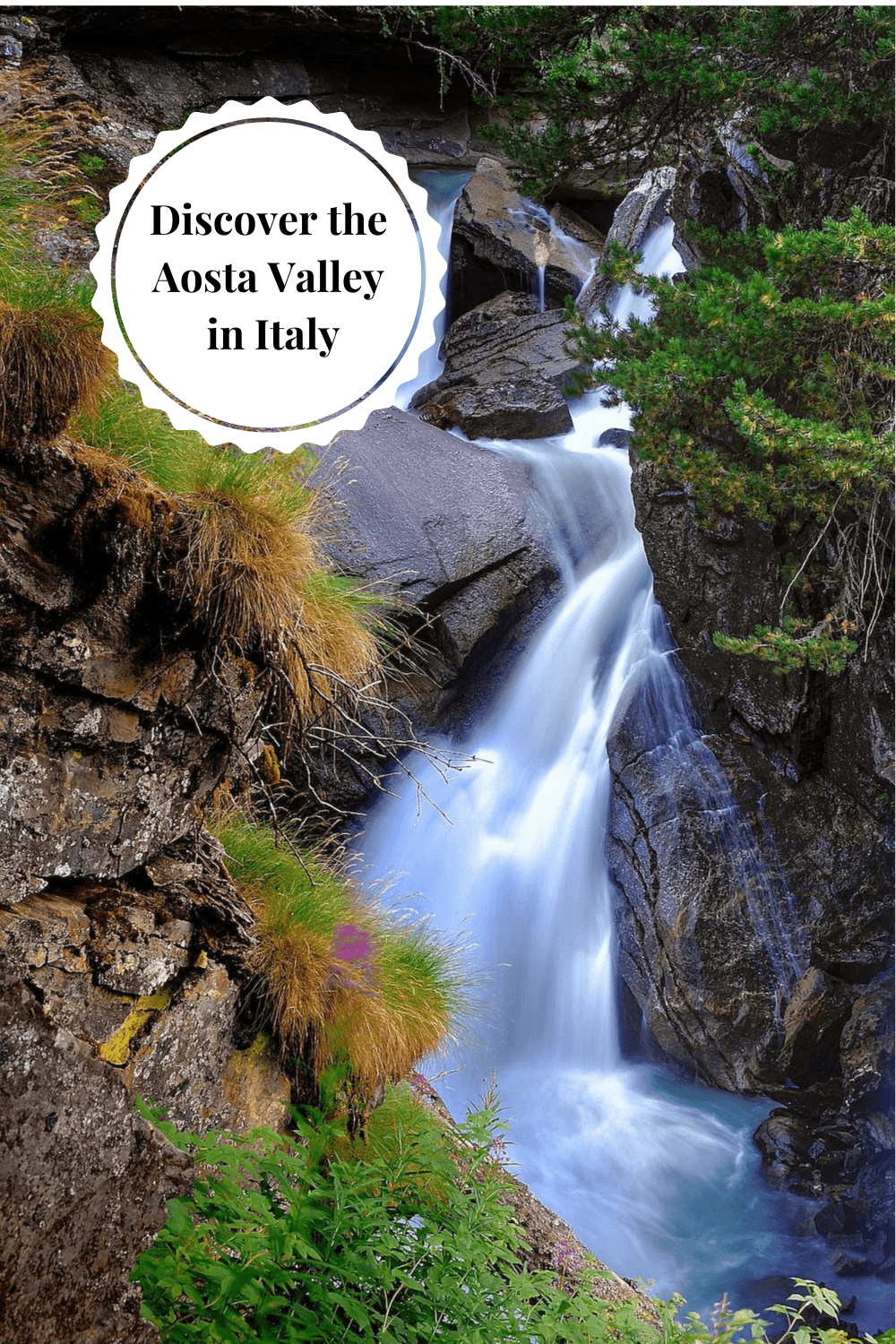


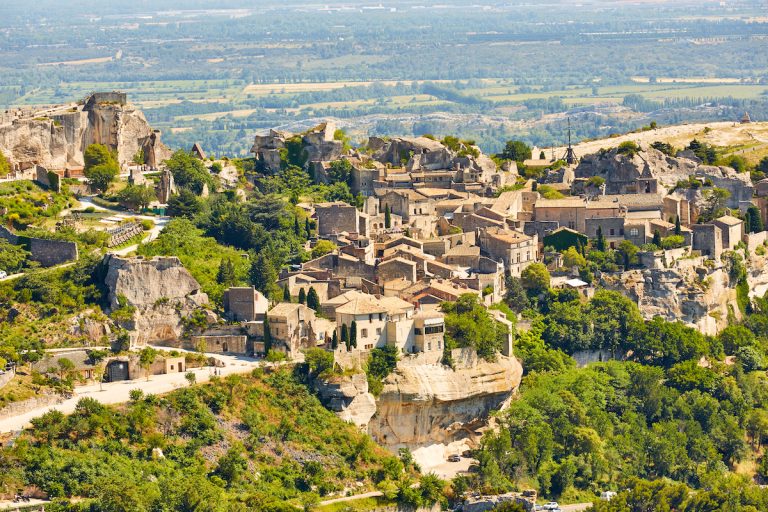


I love reading your blog posts but this one is my hands-down favorite. Thank you.
Thanks, Irene. A real compliment coming from someone as talented as you! You make me blush!
Such a magical place! Great summer destination :D:D